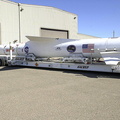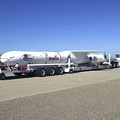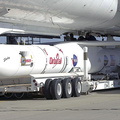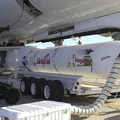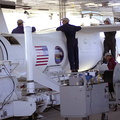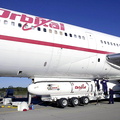
WIKIARCHIVES.SPACE
The Human Spaceflight Archive

Information
- Taken in
- Vandenberg
- Fotograaf/bron
- NASA
- Omschrijving
- At Vandenberg Air Force Base in California, the Orbital Sciences Pegasus XL launch vehicle and Demonstration of Autonomous Rendezvous Technology (DART) spacecraft, which are mated, are being attached to the underbelly of the Orbital Sciences L-1011 aircraft for launch Nov. 9. DART was designed and built for NASA by Orbital Sciences as an advanced flight demonstrator to locate and maneuver near an orbiting satellite. The DART spacecraft weighs about 800 pounds and is nearly 6 feet long and 3 feet in diameter. The Pegasus XL vehicle will launch DART into a circular polar orbit of approximately 475 miles. Once in orbit, DART will make contact with a target satellite, the Multiple Paths, Beyond-Line-of-Sight Communications (MUBLCOM), also built by Orbital Sciences and launched in 1999. DART will then perform several close-proximity operations, such as moving toward and away from the satellite using navigation data provided by on-board sensors. The entire mission will last only 24 hours and will be accomplished without human intervention. The DART flight computer will determine its own path to accomplish its mission objectives.
- Aangemaakt op
- maandag 1 november 2004
- Albums
- US SPACE PROGRAM / SATELLITES / PEGASUS XL / DART / Rocket preparation
- Source link
- https://science.ksc.nasa.gov/gallery/photos/2004/captions/
- Bezoeken
- 32
- Waarderingsscore
- Geen waardering
- Waardeer deze foto
- License
- CC BY-NC-ND
- Modified by WikiArchives
- No (original)
- Downloads
- 2
Mogelijk gemaakt door: Piwigo
